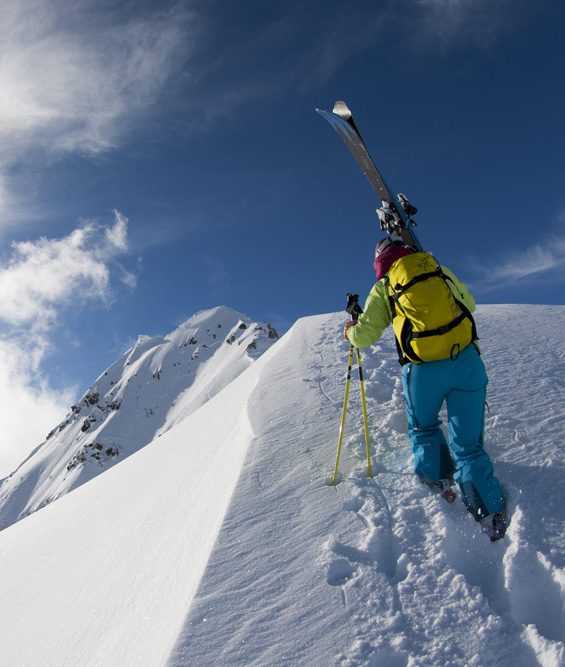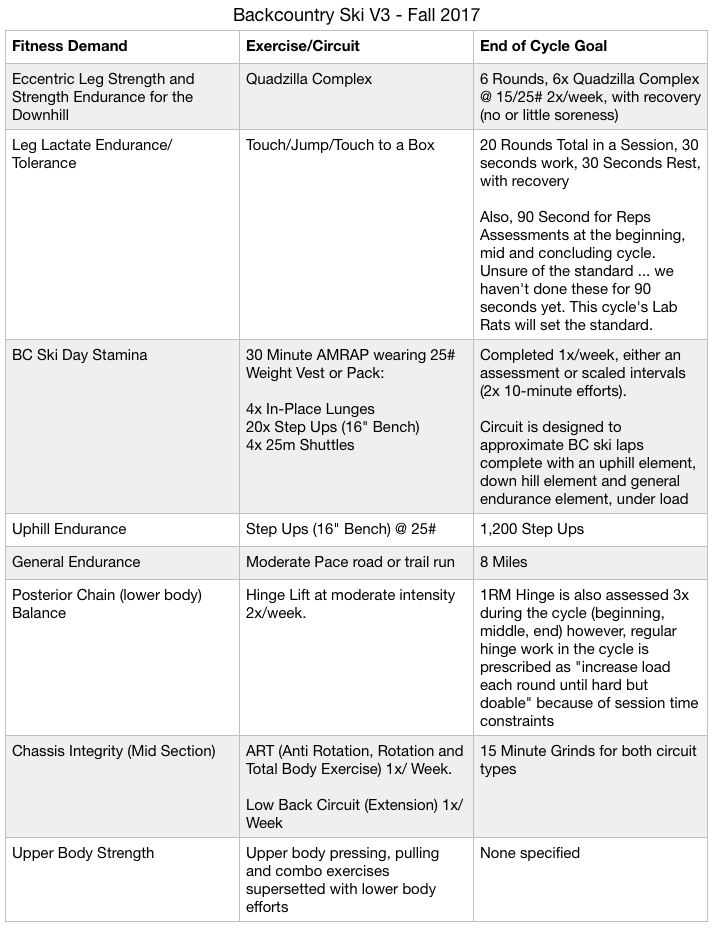
By Rob Shaul
MTI’s Backcountry Ski Pre-Season Training Plan was due for an update and currently here in Wyoming, we’ve got 23 “lab rats” testing the sessions in the new design.
One of the consistent elements in all our plan updates is simplification. Over the years I’ve found that as I’ve gained experience as a coach my programming has become more direct, focused, and simple. I like to say that “sophisticated design is immature.”
This doesn’t mean the person who does the design is immature – but the design itself is immature … and as it “matures” over time and application, “extra stuff” gets cut away.
Program design generally begins too “sophisticated” – or complicated. The best design – houses, cars, tea pots, clothes, training plans, is simple.
Getting to “simple” is a surprisingly arduous process involving testing, running session, experience, and the confidence to make the decision on what elements of the program stay and are enhanced, and which get cut.
Video: MTI Lab Rats work through the Leg Blasters/Mixed Grip Pull Ups circuit and second Touch/Jump/Touch to Box Intervals in today’s session to the coming update of our Backcountry Ski Training Plan.
Overall Cycle Goal
Our mountain sport pre-season cycles are designed to get the athlete sport-specifically fit for the activity so they he/she can begin the season physically prepared. In the case of this cycle, not only do we want our athletes to be able to be able to ski strong and long the first day of the season, but also be able to recovery, and ski the next day, and the day after that, and the day after, etc. So we’re not only training first day fitness, but also the ability to recover from a long day skiing and skiing.
Below is a chart I developed when beginning the Backcountry Ski Pre-Season Training Plan update which outlines the primary fitness demands of backcountry skiing, the exercises/circuits I deployed in the plan update to train them, and the end of cycle goals for this updated plan.
Note we don’t train “balance” during this cycle. I’ve found there is little to no transfer from gym-based balance training to outside performance. Quickly gym-based balance drills simply make the athlete better at the drill, and don’t help them in the sport. At the beginning of a ski season, all skiers are going to be “rusty” in terms of technique. If my skiers are fit, however, they can spend more time skiing early in the season and more quickly kick out the rust and get back up to form.

As designed, the cycle is 7 weeks long, with 3x assessments at Weeks 1, 3 and 7:
Strength Assessment – 1RM Hinge Lift
Sport-Specific Work Capacity Assessment – 90 Second Touch/Jump/Touch to Box for Reps
Endurance Assessment –
30 Minute AMRAP wearing 25# Weight Vest or Pack:
4x In-Place Lunges
20x Step Ups (16″ Bench)
4x 25m Shuttles
Here is the weekly schedule:
Progressions
Learning how to set the progressions for any cycle is part of the art or “craft” of coaching. These training sessions are intense – and my goal is to have the athletes not only be able to complete them at the top of the cycle, but also recover from the effort. This recovery goal plays a part in the setting the progressions.
The most “intense” exercises in this cycle are the Quadzilla Complexes and the Touch/Jump/Touch to box intervals. I’m running the different progressions for each 4 times – or four sessions, before increasing. The goal is to have the athletes able to not only complete the progression – but recover from it, before moving on to the next.
Recovery Drink Mini-Study
We’ve partnered with GU Energy for this cycle and are completed a recovery drink “mini study” in conjunction. Approximately 1/2 of the lab rats are drinking GU’s recovery drink after each gym-based session (Mon-Thurs). At each re-assessment (Weeks 3 and 7), we’ll compare results to between the two groups to see if the recovery drink perhaps made a difference.
After the lab rats complete this cycle and report back from their initial days on the snow, we’ll determine what worked and didn’t work, and update the current plan.
Questions/Feedback?
Email coach@mtntactical.com
More About MTI’s Backcountry Skiing Training Plan